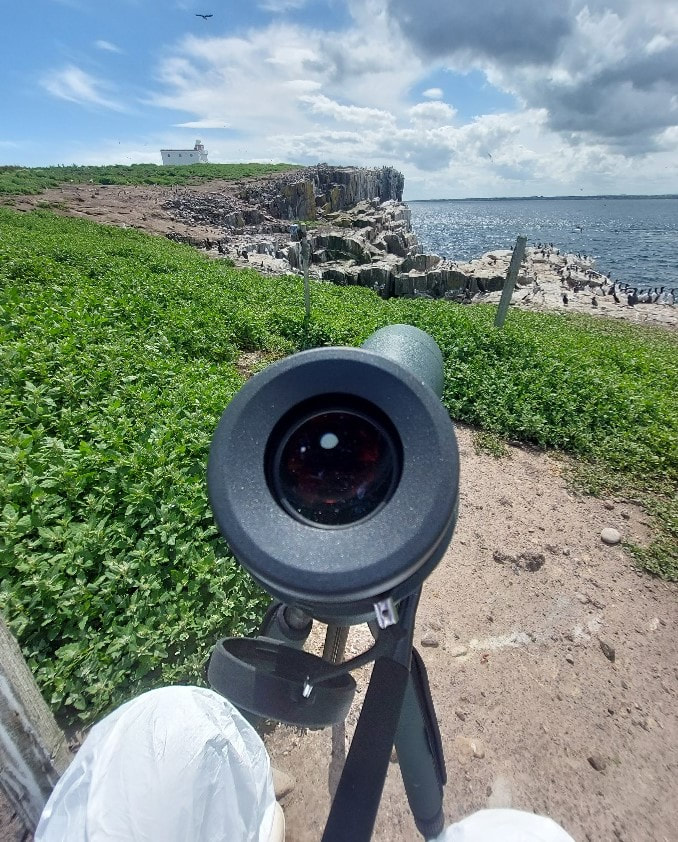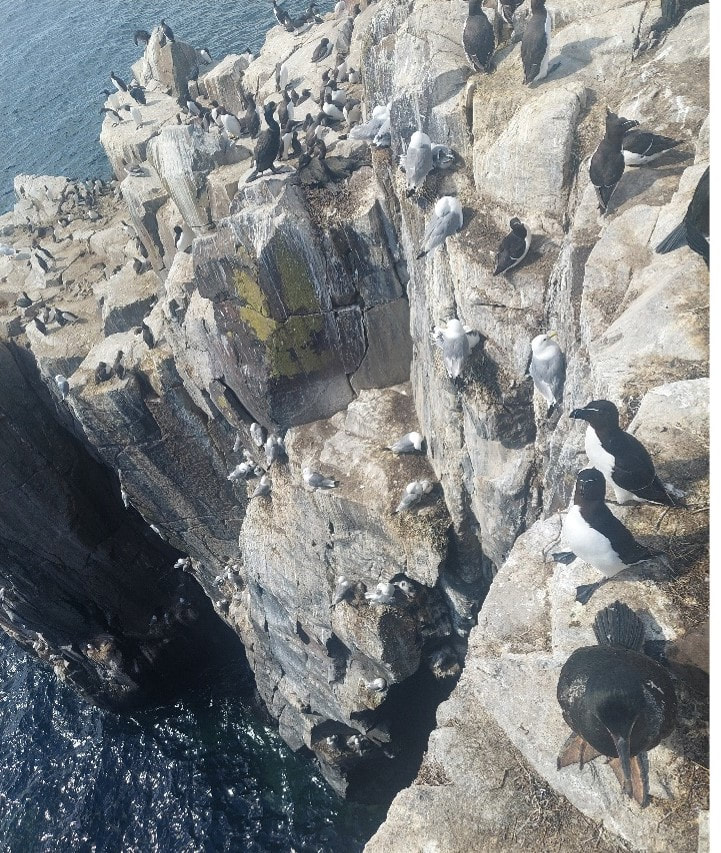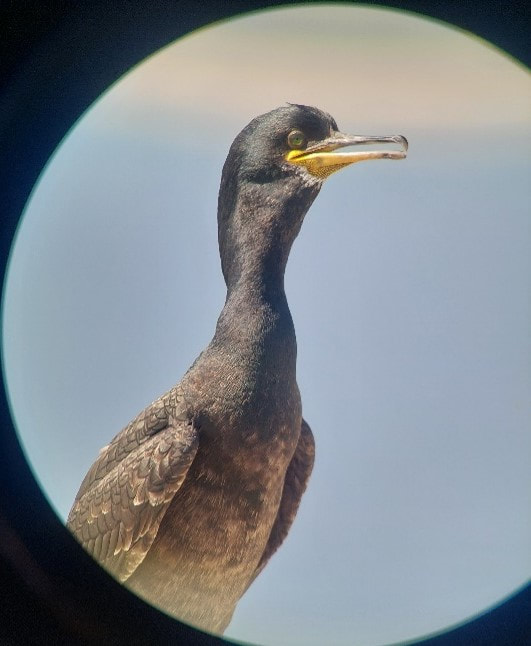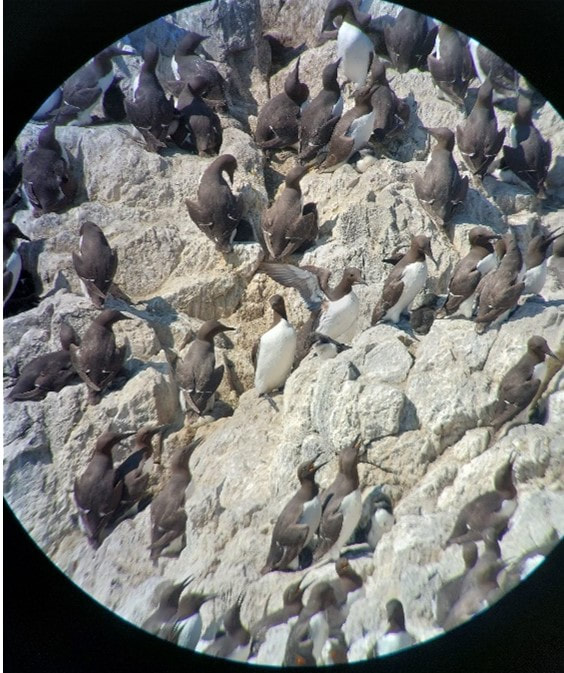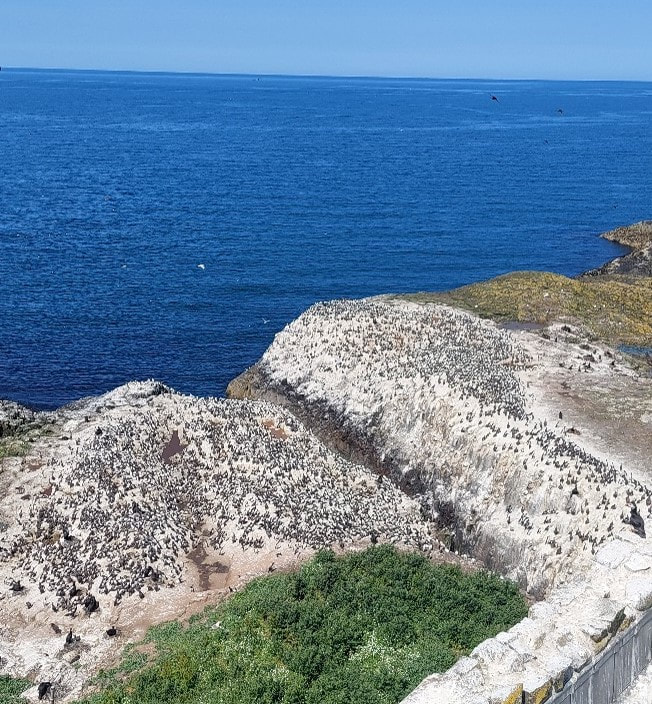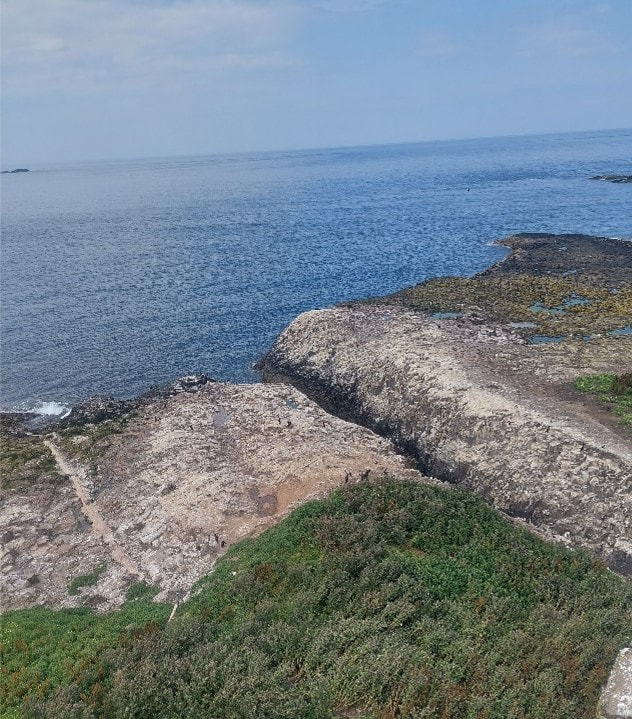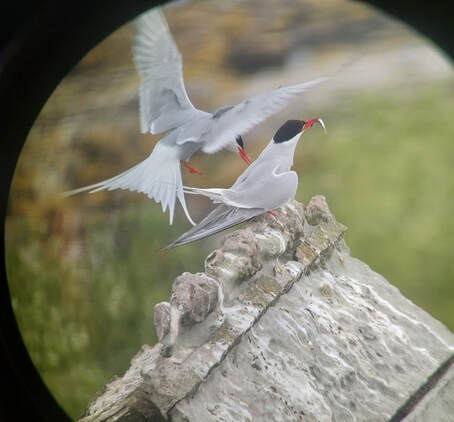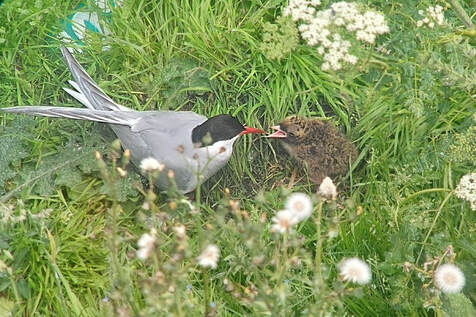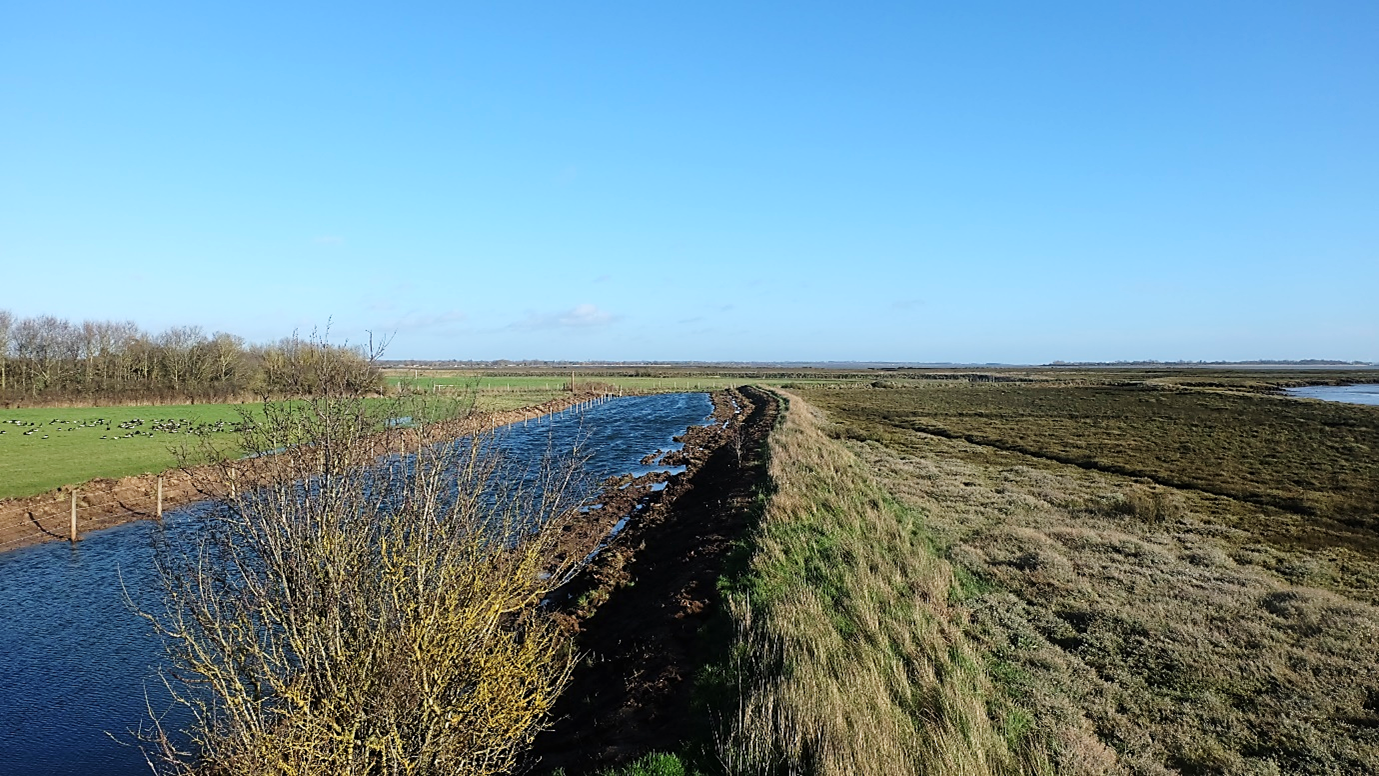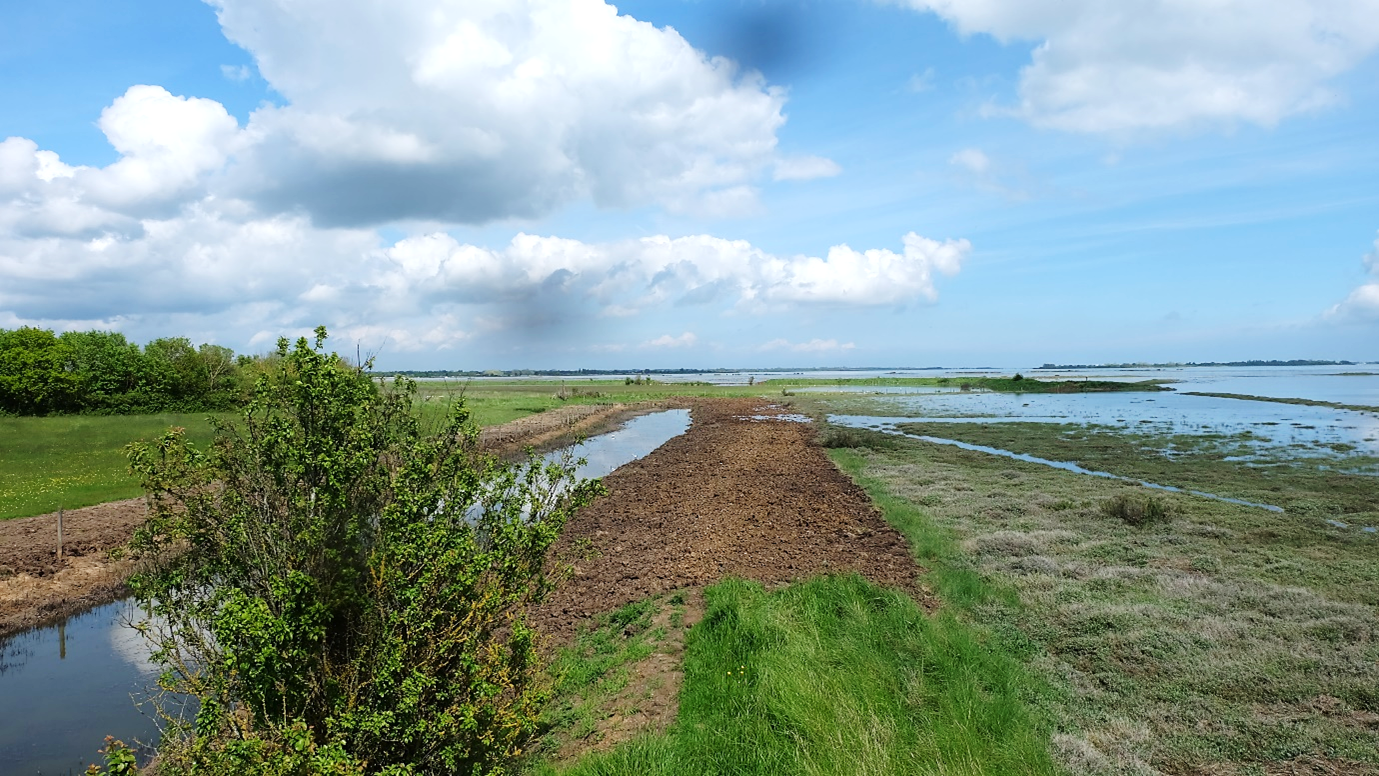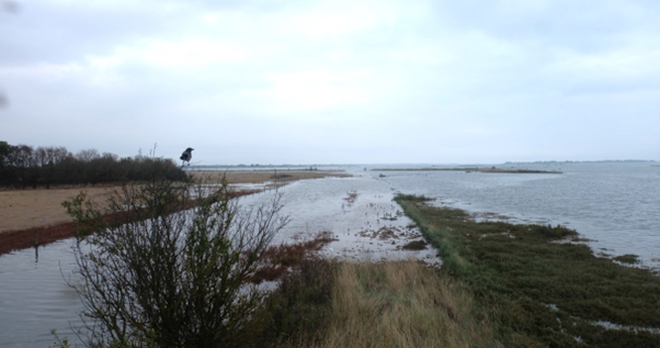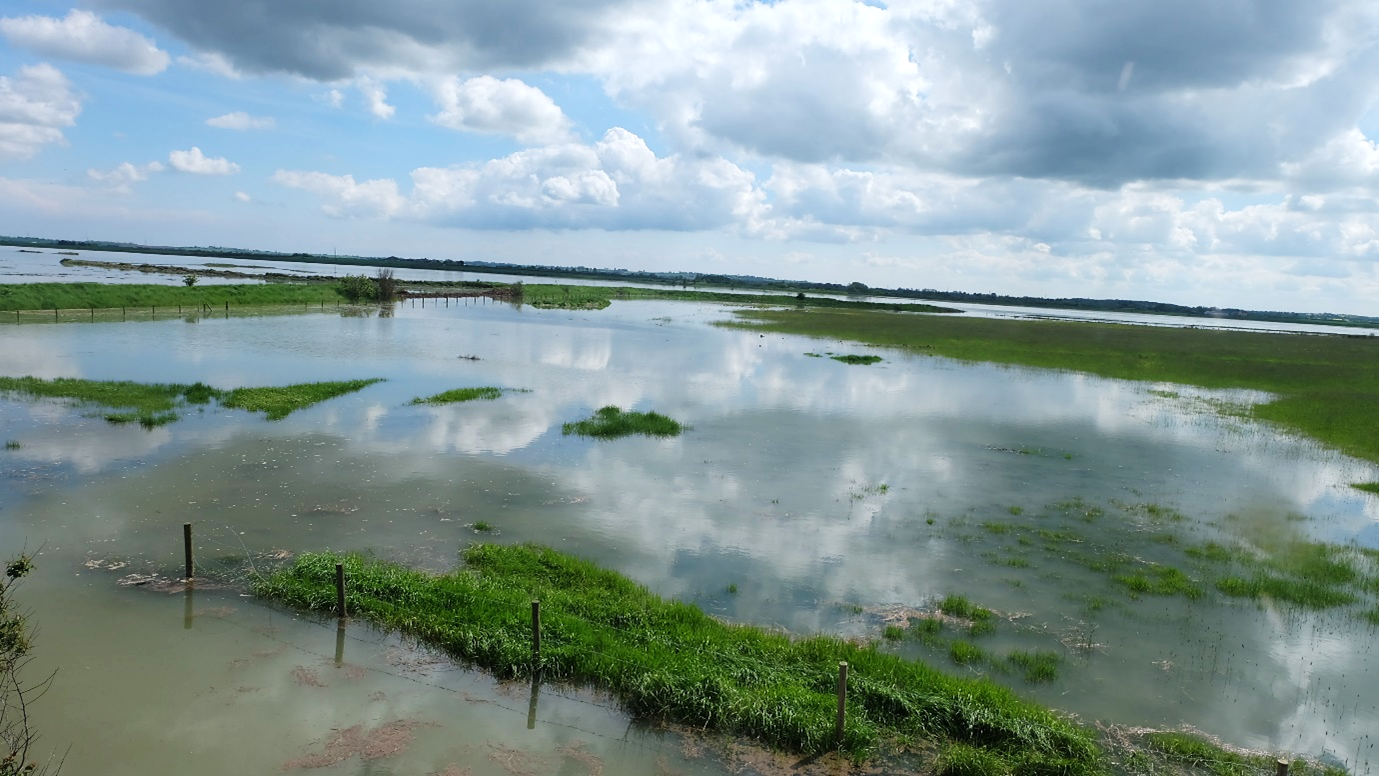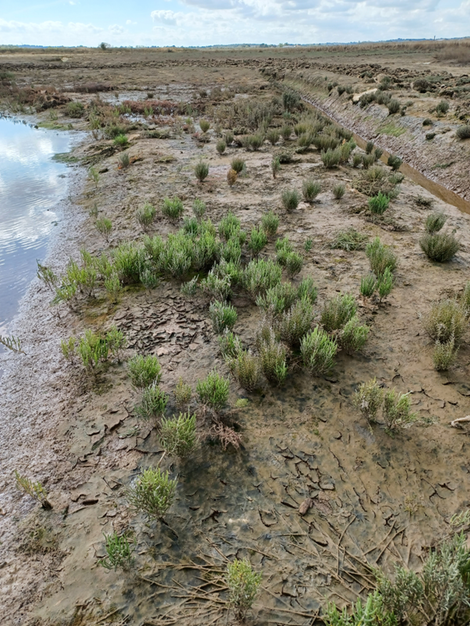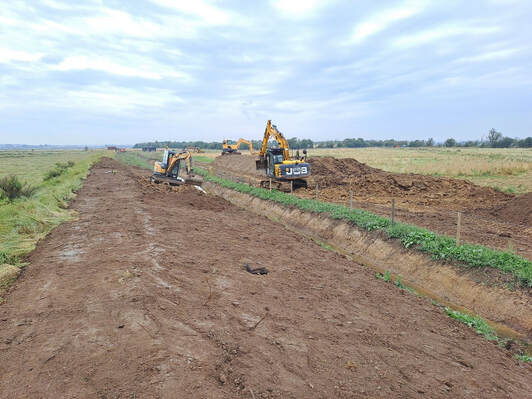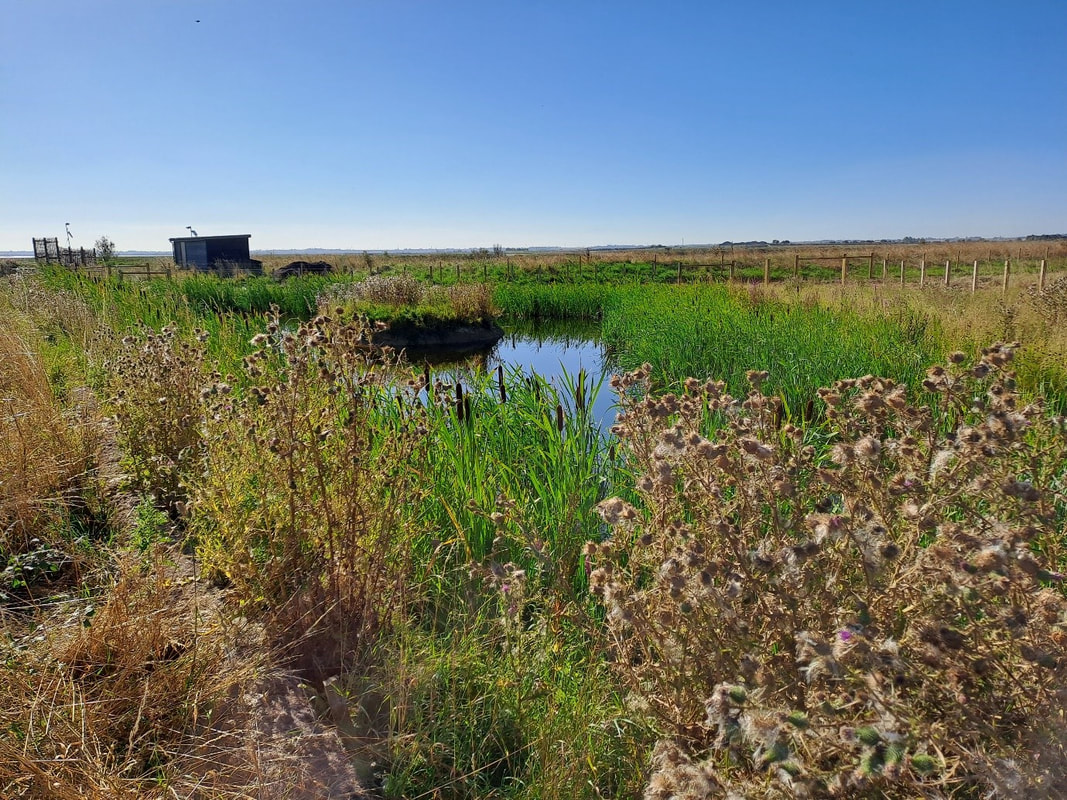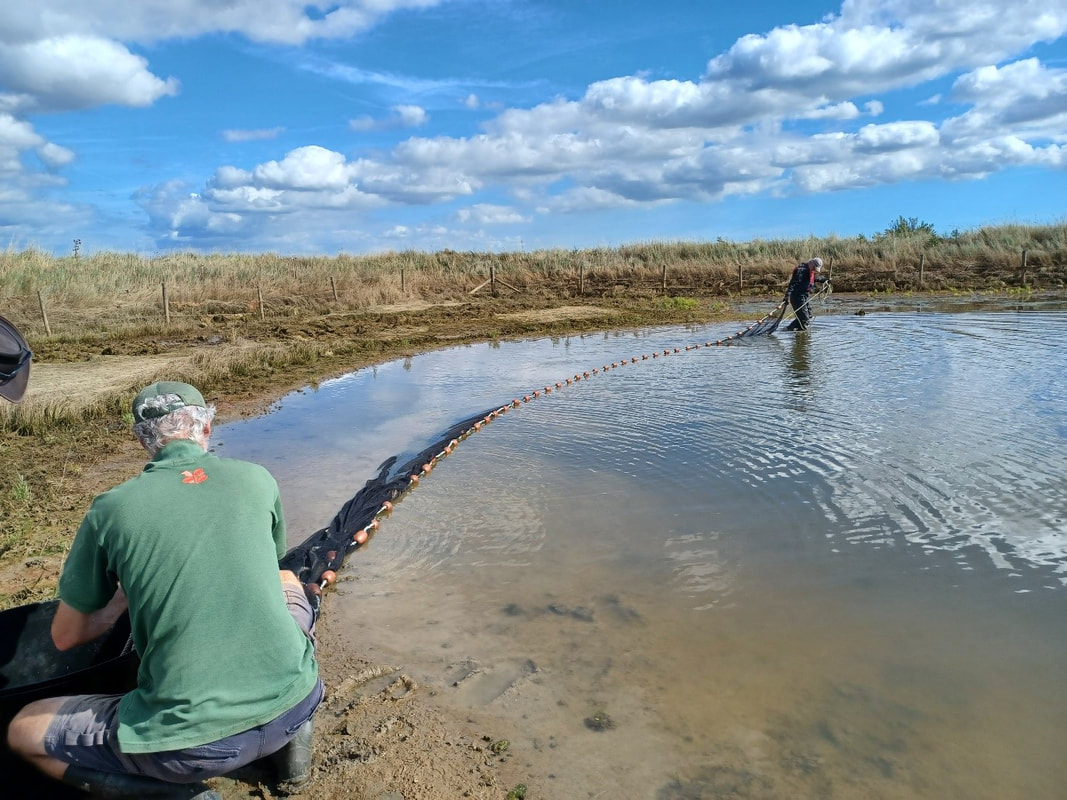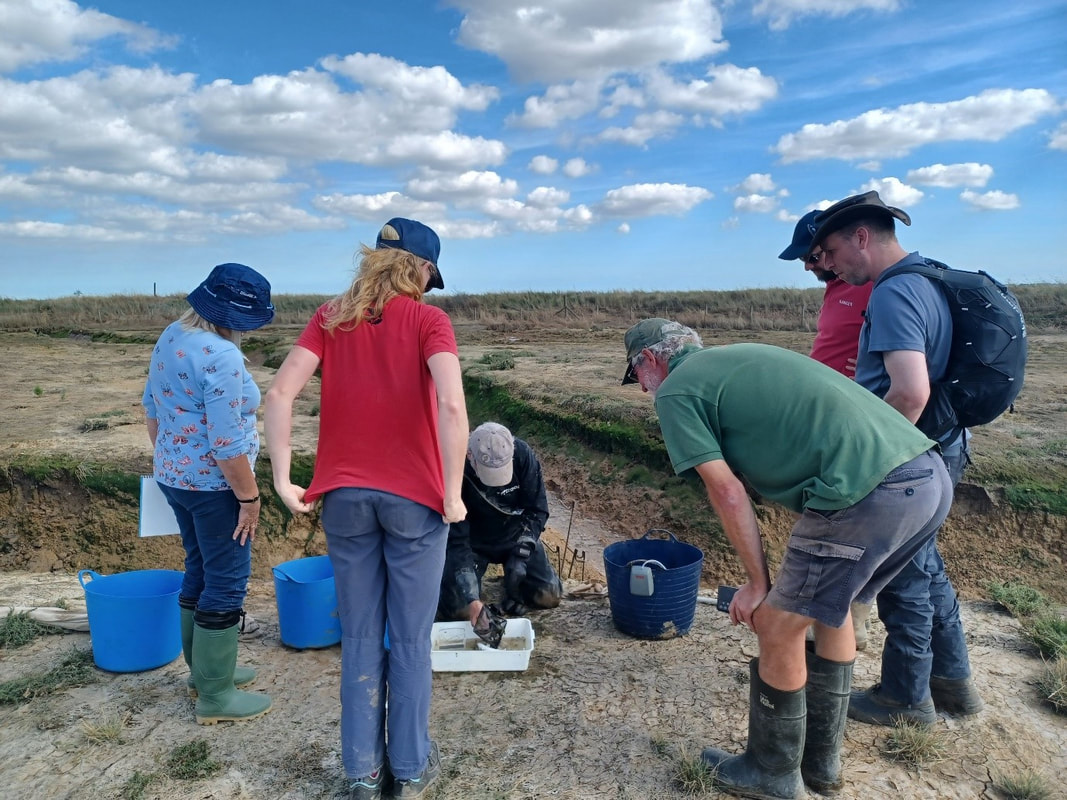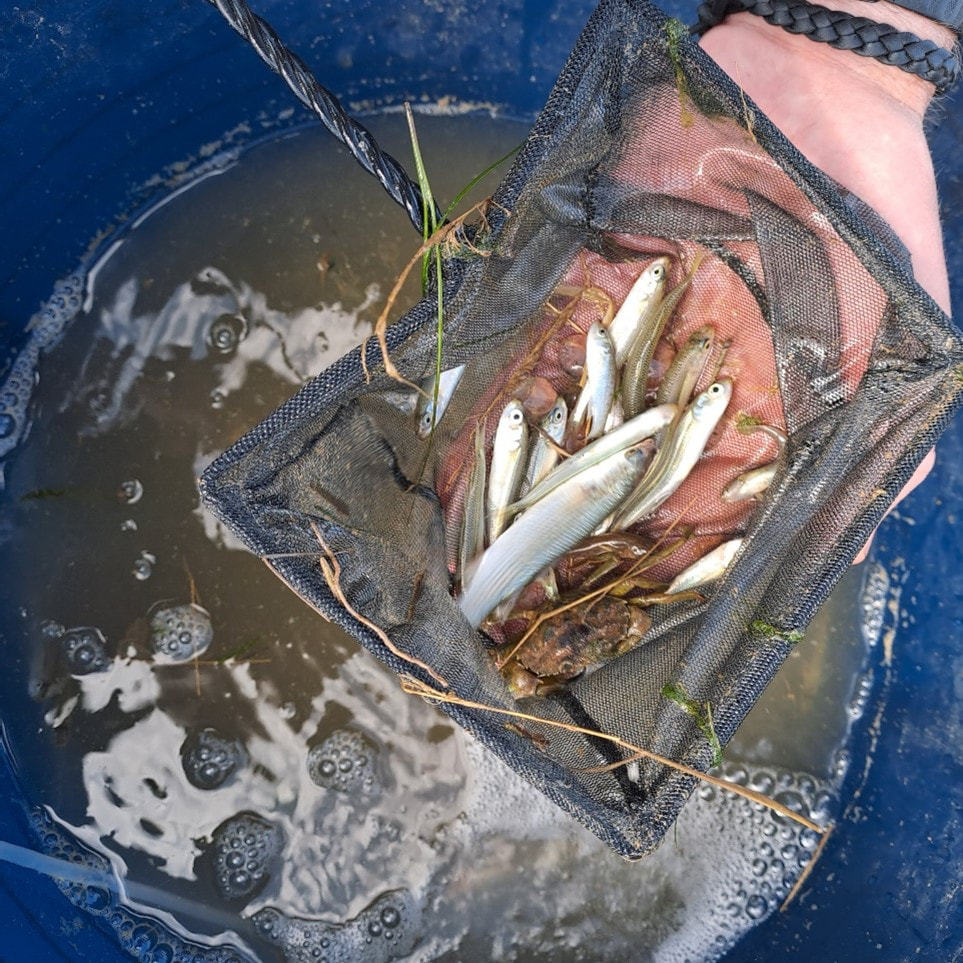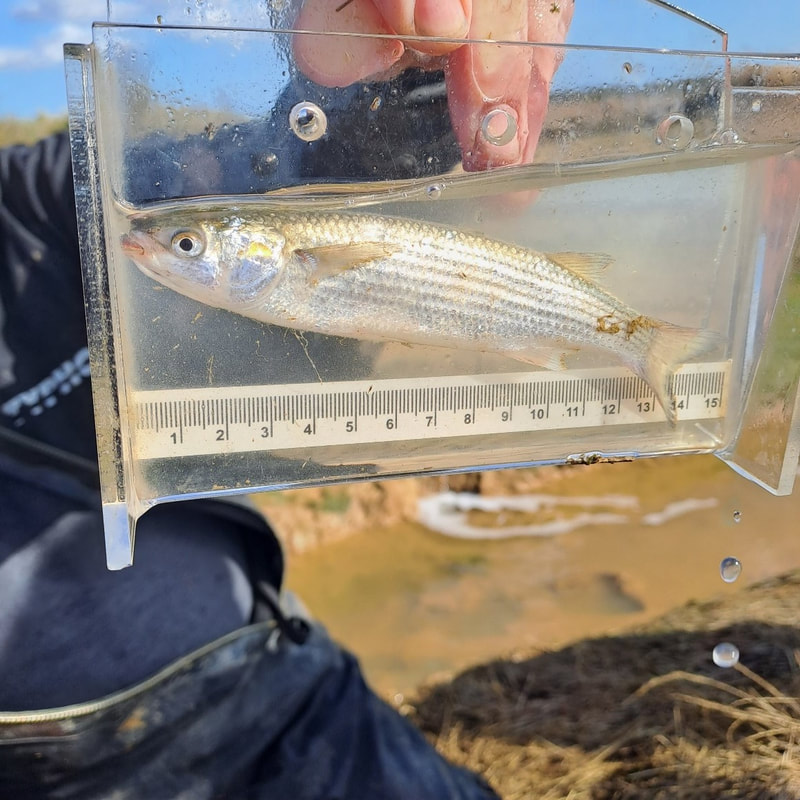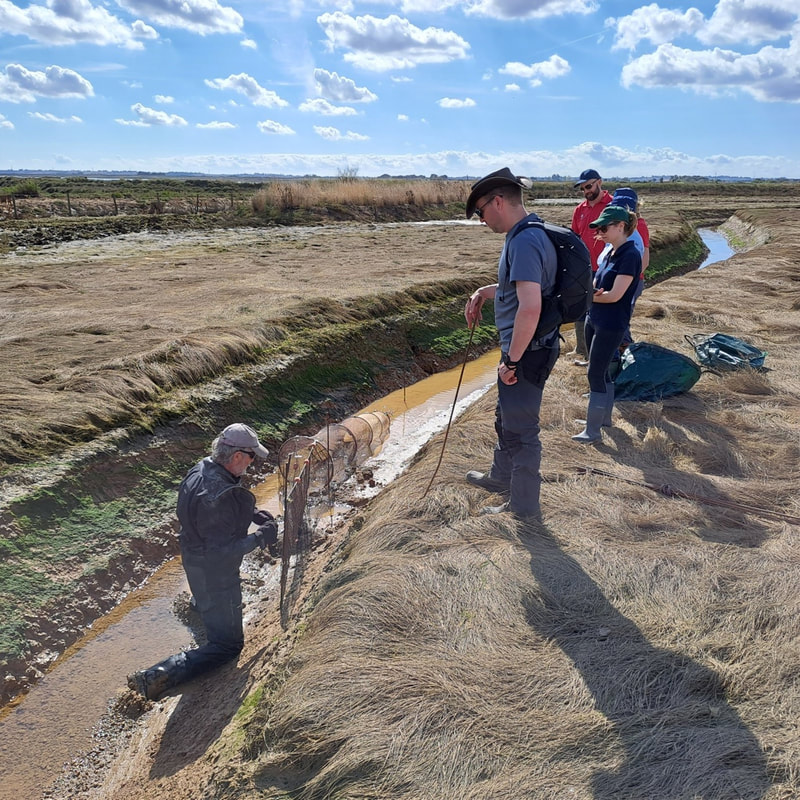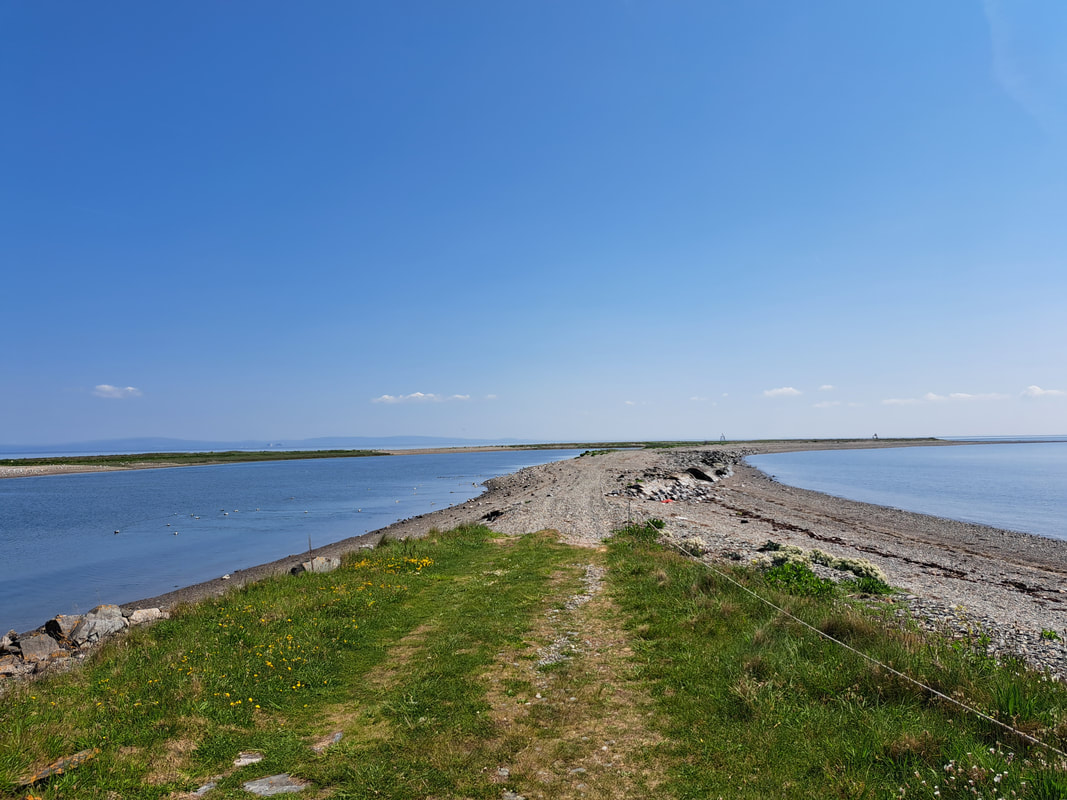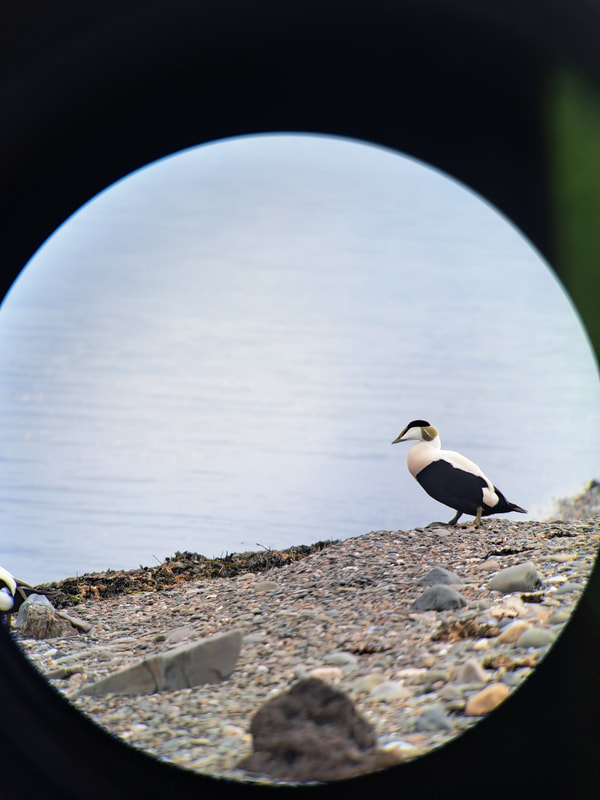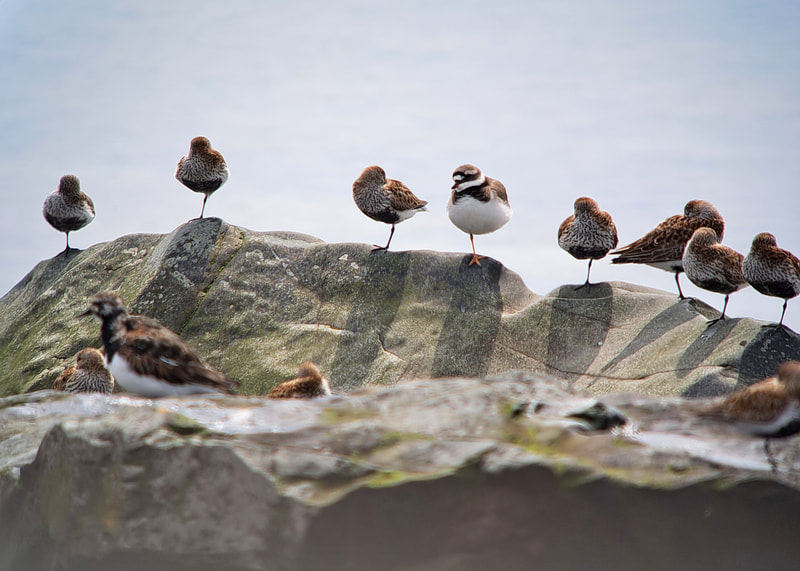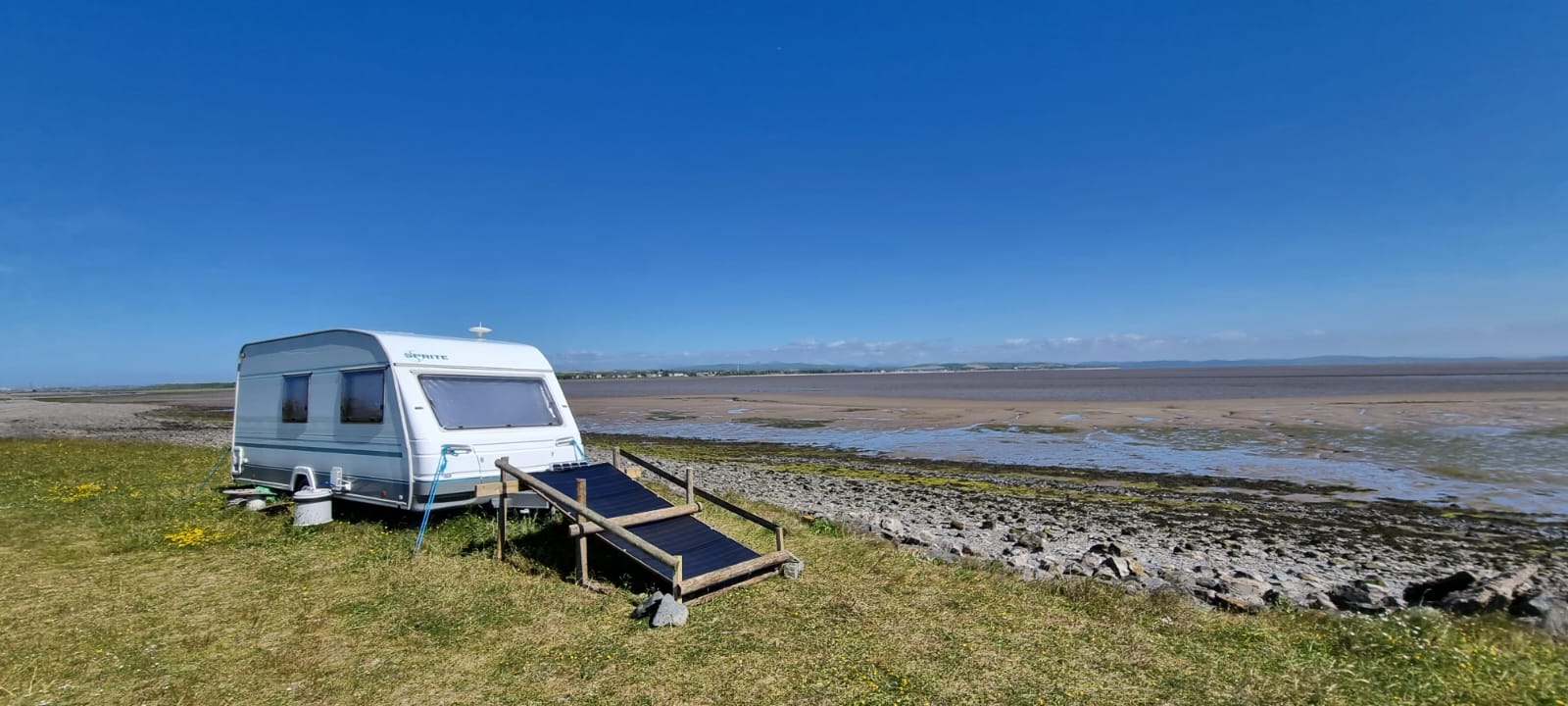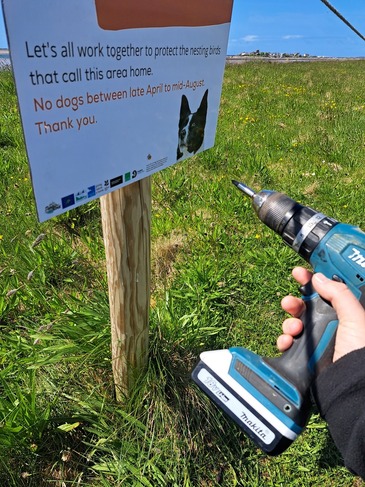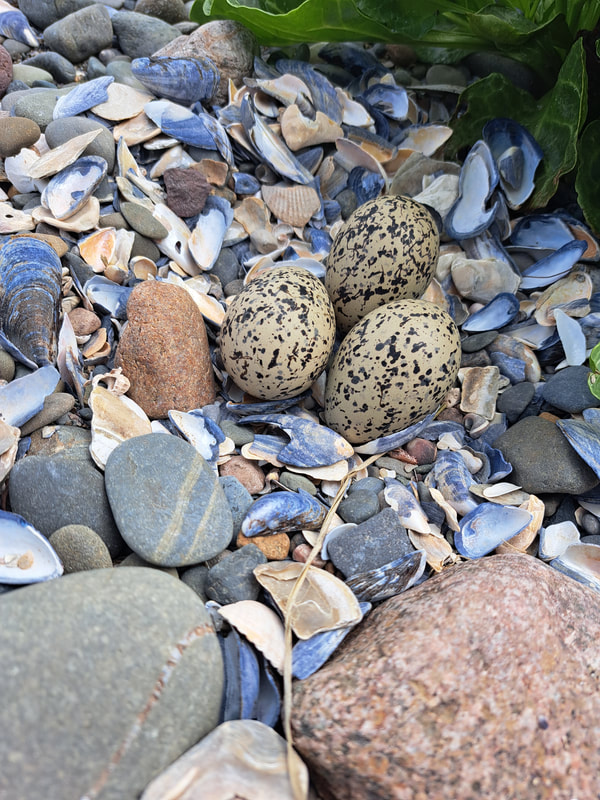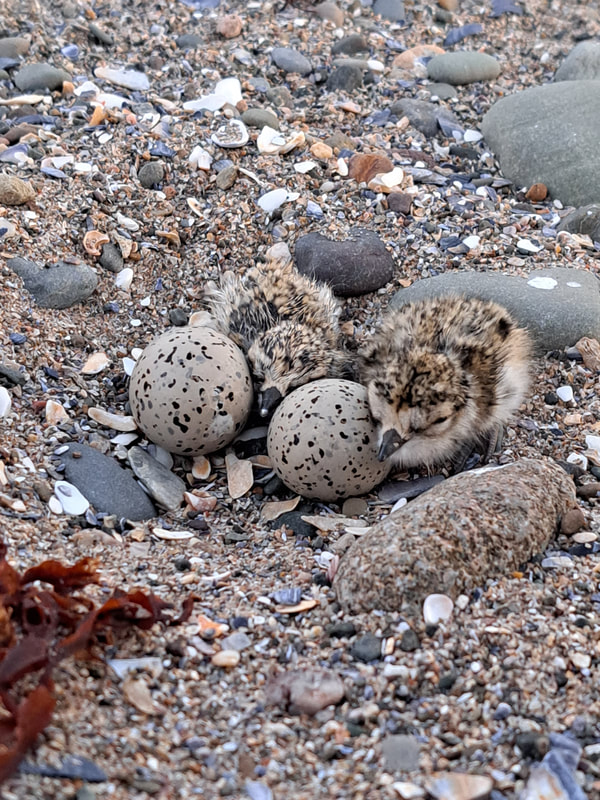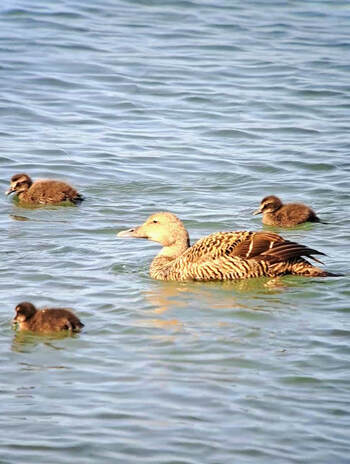|
Blog by Marie Dipple, RSPB Beach Nesting Bird Coordinator The journey begins…! I am thrilled to introduce myself as the new Beach Nesting Bird Coordinator, working on the Life on The Edge (LOTE) project, taking over from the brilliant Lizzie Bruce. With 8 years in the conservation sector, and experience as a little tern warden at Chesil Beach in Dorset and Gronant Dunes in North Wales, I am eager to apply the knowledge I've gained in my career so far to this new role. Having worked on coastal restoration projects, building partnerships, and contributing to nature recovery strategies, I've learned invaluable lessons from my colleagues and fellow enthusiasts. Following in Lizzie's footsteps, I am determined to continue the great work already achieved and continue building relationships with existing partners and exploring new opportunities. The LOTE project wraps up this year, and I'm excited to be part of the culmination of efforts from our team as well as the dedicated project partners. Although in saying this, I realise I don’t want to be seen taking credit too soon, as I’ve conveniently come in as the reports are being written… In my first two weeks, I've already seen the immense dedication of reserves staff, volunteers, managers, and stakeholders towards beach nesting bird recovery in England. Collaborating closely with my LOTE colleagues, I've enjoyed diving into breeding data, case studies, and reports on species like terns, gulls, ringed plover, oystercatcher, and redshank. These birds depend on effective coastal and marine habitat management, and through adaptive management and sharing best practices, we can implement the most appropriate conservation measures. Watch this space for this work developing! There will be some exciting outputs to follow.
I hope this role promises to challenge me, inspire growth, and allows me to work with incredible people. So far, it has absolutely delivered on the latter! I love connecting with people and am keen to collaborate with new and existing partners and stakeholders to drive this work forward; to halt species decline and promote recovery. Here's to new beginnings, and the exciting path ahead! Photo Credits: Marie Dipple
0 Comments
Blog by Rebekah Watts, Shorebird Warden - South Walney, Cumbria Wildlife Trust Nesting Season Spring has finally arrived and with it, changes are occurring. Flowers are blossoming, days are lengthening and here at South Walney Nature Reserve, birds are carrying sticks and feathers and nests are popping up along our beaches which means that nesting season has begun. Nesting season is the most important time of year. The productivity of our birds is highly important and to assist them during this season, a lot of preparation is undergone during the Autumn and Winter months. Nesting Season Preparations Funding provided by ‘LIFE on the Edge’ (also known as LOTE) helps substantially at South Walney nature reserve when it comes to nesting season. LOTE is a Life Nature project which is lead by the RSPB and National Trust. This project aims to improve the quality of target coastal areas as well as providing recommendations for longer term coastal habitat management and/or creation, with focus on little tern, oystercatcher and ringed plover. LOTE have provided South Walney with equipment for electric fences such as solar panels and energisers, monitoring equipment such as trail cameras and thermal scopes and permanent hybrid fencing. LOTE also provides funding for a seasonal shorebird warden to work with the sole purpose of protecting coastal nesting birds. With the help of LOTE, we at South Walney are able to provide protection to nesting coastal birds throughout the season. Preparation for nesting season begins in late August / early September. At this time, we start checking our permanent fences for damage and repairing them. Debris is removed and the gates are shut to stop livestock from entering. Holes in the fence are repaired, wire is replaced and holes dug by predators into the fenced area are filled in. The area around the electric fence is cut back with a brush cutter to reduce interference with the wires. The inside of the fence is also brush cut to create the correct nesting habitat. The fence is now ready to be made live closer to the start of the season. During the nesting season, temporary electric fences and signs explaining what we are protecting are erected. Before this, the area around the perimeter of the fence is brush cut and litter picks are completed. During this season and the previous season, an area of land to past the boundary wall of the reserve to the north was fenced. This land was kindly temporarily loaned to South Walney Nature Reserve, as little terns choose this location to nest. The habitat is shingle and sand, close to the sea which is a perfect location for terns to nest and fish. To provide more habitat for nesting coastal birds, a tern raft is moved into place, floating in the pool of the oyster farm. The anchors are dropped, a camera is installed and the raft is ready for occupants. There is a permanently placed raft which is used by the same Oystercatcher pair each year. The parents are currently sitting on eggs there now! Chick shelters, nest cages and cameras are important to protect vulnerable chicks and adults from predators and extreme weather. Shelters of different shapes (for different chicks) are placed on the tern rafts, inside the fences and along the beaches to provide shelter and safety to chicks. Cameras are crucial for monitoring wildlife. They are placed directly on nests and at crossing points to catch predators. Cameras are placed out early in the season and checked regularly throughout the season. New to 2024 A new sound lure and hand-crafted little tern and herring gull decoys were created in 2024. In an attempt to attract a mixed gull colony of herring and lesser black backed gulls to nest in a new location, 10 adult and 6 juvenile herring gull decoys were created and placed in a temporary 8 strand fenced area. This fence was put in place at the start of the season with decoys and a trail camera, and has successfully attracted first year herring gull visitors since the addition of the decoy birds. We hope to see these gulls return next nesting season! To attract little tern, 40 little tern decoys were crafted and placed on the tern raft, in the temporary 12 strand fence to the north of the reserve and in the fenced area on Foulney island nature reserve. In combination with the decoys, a sound lure was created and is played on loop in the daylight hours. This has successfully attracted 12 pairs of little terns and we are hoping to see chicks in the next couple of weeks. Good Luck, Birds! Now that fences are live, decoys and sound lures are in place and cameras are being regularly checked, it’s up to the birds to raise their young. We wish them the best! Link to first South Walney blog by Bekka: LIFE at South Walney Photo credits: Rebekah Watts Blog by Flora Burn, RSPB Research Assistant I was initially employed in 2023, as a HPAI research assistant and following the end of the breeding season; have since been working on the EU funded LIFE on the Edge project. After much perseverance, my goal of being employed in the conservation sector finally came to fruition. It can only be up from here! Donning full PPE in baking heat and pouring rain was made worth it to see some of the beautiful, special spots of the Northumbrian coastline. Home to thousands of seabirds. The Farne Islands was where I spent the majority of my visits through the week – also rotating around Lindisfarne and Long Nanny site. My first visit to the Farne Islands, I had few words. The beauty was extensive. I had never been so close to such a vast expanse of different seabirds, each drowning the other out with a cacophony of calls. Though it was sobering to see the avian flu wash through the colonies. As a research assistant, I monitored the birds daily; collecting and recording data, reminding myself that the data will help us to understand this deadly virus and inform future decisions for the protection of species. After many hours spent watching a variety of species, the sea of black and white (Kittiwakes, Guillemots, Razorbills, Shags) covering the rock faces gradually started to become patchy, with more and more heading off to their wintering grounds. I took my last boat ride back to land, after finally having (just about) found my sea legs, having watched thousands of young grow, fledge and leave. It was time to get back to work in a slightly less wild environment, but no less interesting. I was taken under the wing of a pre-existing team, and joined in on the EU funded project, LIFE on the Edge. My work helping with the creation of a toolkit guiding best practice of conservation projects managing beach nesting birds has taught me a lot. The aim is that it will aid the conservation of beach nesting birds across the UK. In helping to create a ‘toolkit’ it provides a central resource, a hub of information, for site staff, volunteers, members of the public and generally anyone of interest, to access. In essence, a go to guide / manual on how to protect beach nesters. Time was spent reading, researching and writing. Having worked as a Little tern warden previously, joining the project felt like a natural fit – having experienced the hard work and team effort it takes to protect these vulnerable species. I thought back to the days of trudging beaches for miles, lugging fencing, fishboxes, shovels, pleading with visitors to keep away from birds, doing everything possible to protect the little visitors whose numbers are so low, in efforts to protect them. I couldn’t help feeling like a manual would have been useful! I threw myself into the research and collation of information, determined to pull together an informative, accessible document. Some species I already had a good level of understanding of their needs, some I knew less about, such as the Mediterranean gull. Gulls seem to get a bad rep. They are an amber listed species, and with reduced suitable natural nesting sites, much like many other beach nesting species, numbers are dwindling. A few years ago, egg collectors decimated a mixed colony of Black-headed and Mediterranean gulls at Poole Harbour. 60-70% of nests were emptied by illegal collectors overnight, to be sold on and served in a few high-end luxury restaurants. This has a huge impact on breeding success. Disturbance, predation and climate change are all severely impacting seabirds, and we need to do what we can to put measures in place to offer the best chances of survival. Through my work, I have vastly expanded my knowledge of a variety of beach nesting bird species and their conservation practices. It’s encouraging to know that the work being produced will inform UK wide conservation in practice, with detailed sections providing information on species, monitoring methods, predator monitoring (trail cameras, fencing etc), predator management (chick shelters, audible deterrents, diversionary feeding etc), disturbance and management (signage, zoning, patrols etc), habitat management, and engagement with the community. We can only do our bit, and long may it continue. Editor's comment: Please note this toolkit is still being written, but will be placed on the LIFE on the Edge website once it is finalised. All photos are copyrighted: Flora Burn Instagram: @flora_burn Blog by David Mason, National Trust - Suffolk and Essex Coast Ranger April 2023 was an exciting month for the Northey Island Coastal Adaptation Strategy and the LIFE on the Edge project. After several years of planning and preparation the final parts of the embankment were lowered on April 28th and the tide came into the new starter creek, finally overtopping onto the Eastern fields at high tide on the 4th of May. Hurrah! We have timelapse cameras on site to record progress and these are quite useful in comparing before and after photos. This photo shows the ‘before’ of the pond the water voles were translocated from, with Brent Geese settled in the field. The area on the right is the location of the first managed realignment in England carried out in 1991, which laid the foundation for later realignment projects around the country. This is the same view after the embankment was removed, showing the tide coming over the 1991 realignment. On particularly high tides the incoming water covers the lowered embankment and spills into the pond. Here little egrets and other wading birds can be seen in the shallows. May the 4th be with you. The forces of nature take charge at Northey as the first high tide overtops the new starter creek onto the Eastern field. Saltmarsh plants have already begun growing in the Eastern field, predominantly along the edges of the creek and scrape, whilst birds including lapwing, little egret, redshank and greenshank make use of the new intertidal area Bank Reprofiling The bank in the Northern field has been reprofiled with a shallow back slope to make it more resilient to overtopping by the tide during storm surges. Capped with topsoil from on site this will quickly regenerate and forms part of a new circular walk around the site, open April through to September. A new borrowdyke has been dug out further inland. This drains the field and links to an outlet pipe with flap valve that takes excess water into the saltmarsh. The ditch contains a deeper pond area for freshwater wildlife. The field has been re-fenced and will continue to be used for hay making and grazing which keep the grass in good condition for brent geese, lapwing and curlew to use in the winter. Water vole update- As the landscaping work has finished, the fencing to keep the water voles in their new pond has been removed. It now looks like part of the landscape and the voles are free to roam into the network of freshwater ponds and ditches. Fish survey training National Trust staff undertook fish survey training with Steve from the Institute of Fisheries Management. After laying out fyke nets in the creeks at low tide, we trawled a tidal pool with a seine net while waiting for the tide to rise and bring the fish in to the creeks. The seine net caught a range of small fish including common goby, bass, thin lipped grey mullet, gold grey mullet, stickleback, prawn and shrimp. Larger bass were caught in the fyke net nearest the seaward end of the creek. The surveyed marine life were returned to the creeks and scrapes following identification to continue their journeys around the estuary and further afield. Links to previous blogs about Northey Island Part 1: www.projectlote.life/news/northey-island Part 2: www.projectlote.life/news/ntconservationadaption Part 3: https://www.projectlote.life/news/ntwatervoles Part 4: www.projectlote.life/news/northey-update Blog by Rebekah Watts, Cumbria Wildlife Trust Foulney Island Warden Why is Foulney important? Foulney Island Nature Reserve is comprised of a shingle spit within Morecambe Bay SPA connected (via manmade causeway) to the mainland. The reserve is home to several wintering bird species such as knot, dunlin and wigeon and is an important breeding location in the spring and summer for shorebirds such little terns, Arctic terns, ringed plovers and oyster catchers as well as other bird species such as pied wagtails, meadow pipits, eiders and skylarks. The terns that choose Foulney as their nesting grounds are protected species and they are in decline. It is so important to offer them a safe place to lay their eggs and raise their chicks as they are easily disturbed by human recreational activities, dogs, aerial and ground predators (such as sparrowhawks and foxes). Their nests are vulnerable as they nest where there are no visual obstructions to allow them to watch for predators but this means that they nest out in the open, making their chicks and eggs susceptible to predation. Their eggs are at risk of being trampled by people, as their camouflage is very successful. Terns nest on shingle and require close access to the sea to feed. That’s what makes Foulney the perfect place for them. Terns return to the same colony to breed in most cases and Arctic tern travel 22,000 miles on their migration. This special little island hosts these incredible birds and it needs to be protected. Breeding Season Preparation Preparation for breeding season on Foulney Island is an intense operation! For this year, the main island was turf stripped to provide extra habitat for shore nesting birds. This new shingle area was fenced off to protect the birds using it to raise their young, from ground predators such as foxes, rats and hedgehogs. Turf stripping involves the removal of the top layer of vegetation and in this case, changing the habitat to shingle. The vegetation was then buried beneath the layer of shingle. This area has been used this season by eiders, ringed plovers and oyster catchers who’s chicks began hatching recently, proving the success of the change in habitat! Skylarks and meadow pipits also benefited from the ground predator protection in this area as they too nested here, inside the fence on the edge of the shingle where vegetation remains. In preparation for the electric fence the vegetation was strimmed. Insulator stakes were knocked into the ground and electric wires passed through the insulators. To prepare the public, signs were put up in the carpark, the causeway and on the island stating that dogs are not allowed and explaining why, and the rope fence to fence off the beach area, where the birds nest, was put up. Lastly, the caravan was put in place. Then it was time to begin surveying! Warden life on Foulney Hi! I’m Bekka, and I’m this year’s seasonal warden on Foulney island nature reserve. This beautiful little island reserve is home to many species of breeding birds over the summer including oystercatchers, ringed plovers, eider ducks and little terns. In addition to the birds, the island is home to and visited by mammals such as grey seals and voles; as well as insects such as butterflies and moths. Sharing an island with such beautiful wildlife is an amazing experience. Being the only person living on an island might seem lonely, but I have plenty of fishermen to chat to, and of course the wildlife! During the season I have been lucky enough to experience finding nests and watching parents lovingly incubate their eggs, and have watched eggs hatch into beautiful chicks. Watching eider females with crèches of up to 30 ducklings swimming across the water and oyster catcher parents leading their chicks across the shingle are sights that will never get old. As the warden, I spend my time monitoring eggs, chicks and adults, checking trail cameras and engaging with and educating the public. Explaining to the pubic the importance of reducing disturbance to nesting birds is an extremely vital part of my job. The natural threat response in nesting shorebirds is triggered by the public and their recreational activities, especially when dogs are involved. When threatened, shorebirds are forced to flee, leaving eggs and chicks vulnerable to predation, and forcing the adult bird to expend energy which should be used in incubation or finding food. In the worst case, an out of control dog can kill shorebirds, which unfortunately occurred on Foulney this season. It is so important that our shorebirds are protected. We all have our part to play! Now that chicks are hatching we are well into the season. Fingers crossed that all goes well here on Foulney island! |
Archives
April 2024
Categories
All
Photo credits: Oystercatcher by Katie Nethercoat (rspb-images.com)
LOTE Logo credits: Saskia Wischnewski |













